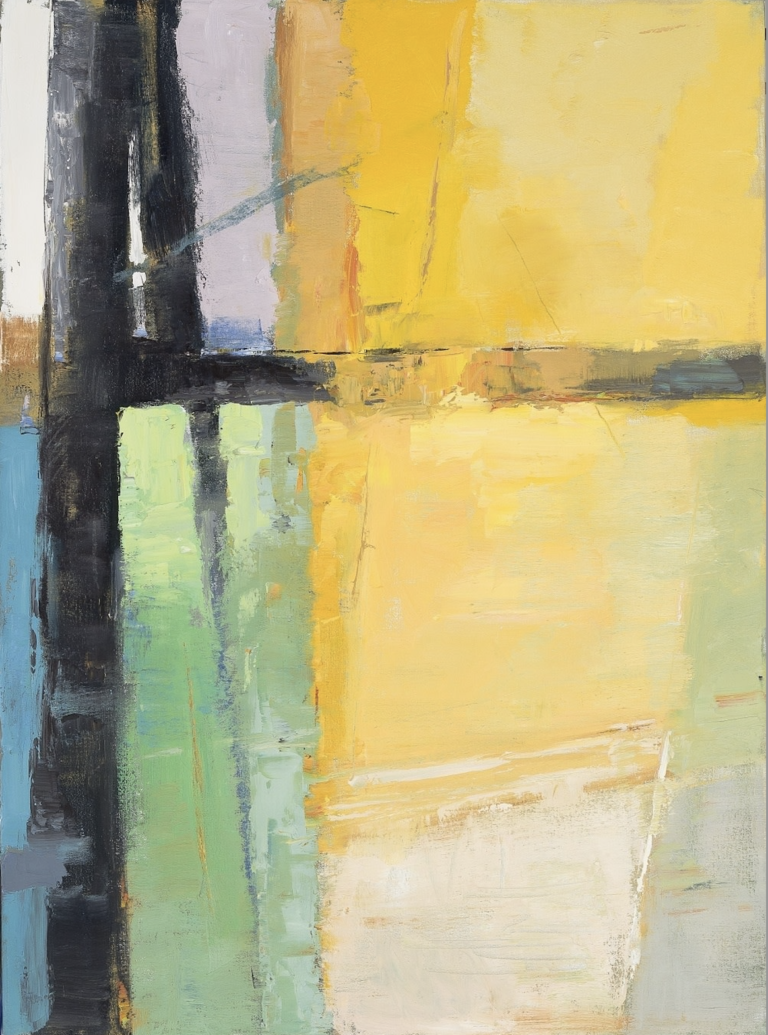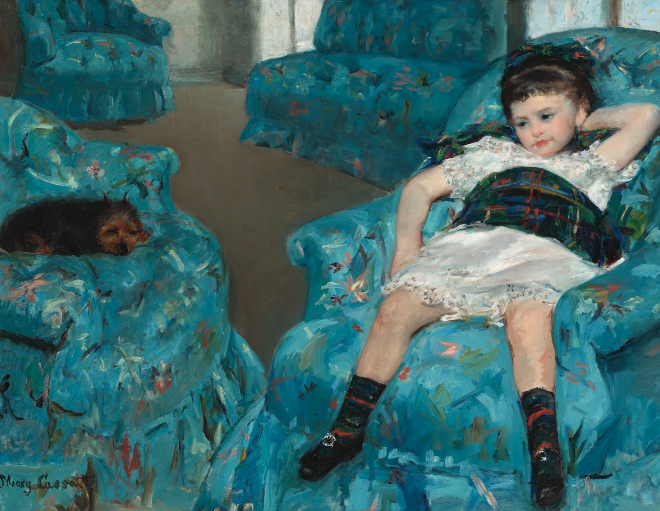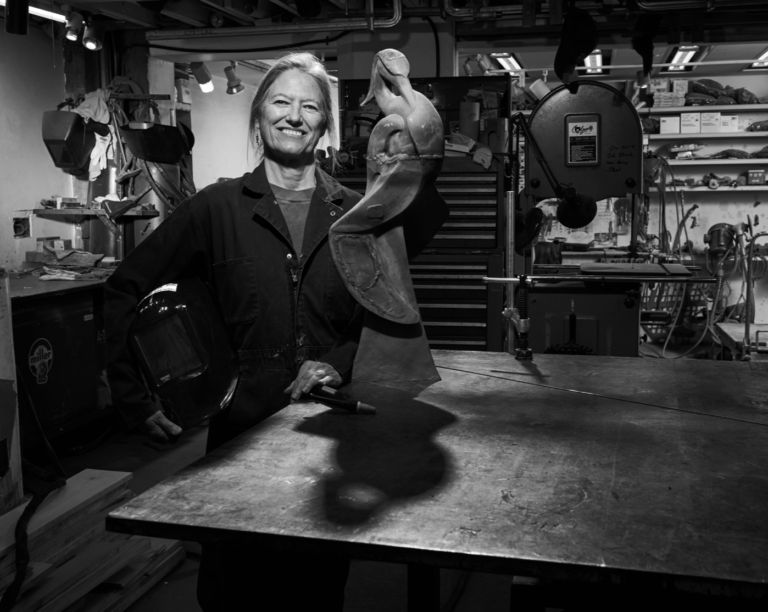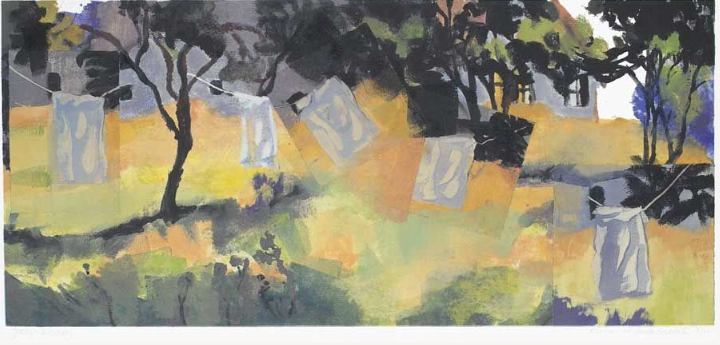I’ve met many collectors who get tongue-tied when it comes to talking to artists. Most collectors do not want to hurt anyone’s feeling, especially an artist they admire. The question is then, what can they say that won’t get them in trouble?
On the flip-side, because art comes from a personal place of introspection, it can be difficult for some artists to express their work’s deeper meaning verbally. This may be why, when asked to talk about their work, many artists fall into “art speak,” when they tell you all about their medium, creative process, or how they search for beauty or great designs. In other words, they stay on the surface — literally.
If you are a collector who wants to make a genuine connection with the artist whose work has caught your eye, here are some of the politest ways to get past “art speak” and into the heart of an artist’s story.
If you’re an artist, please chime in with your thoughts on how collectors can connect with you.
Genuine Connections
Think of art as an extension of the person who made it, like tangled necklaces, the two cannot be easily separated. Everything from the daily news to books, movies, and random conversations can filter into a person’s art. And then there are the memories from childhood and past relationships, where you live, travel — the sky’s the limit. In other words, a person’s entire life is fodder for art. And how that comes out is part of the language each individual has developed in their chosen medium.
As a collector, you want to know the origin stories of artwork in your collection for several reasons. First, this is the heart and soul of the work. Second, as a human, you’re hardwired for stories, so this is your strongest connection to the work. Third, stories add to the provenance of the work — think Picasso’s Blue Period or Jackson Pollock’s “drip paintings.” When collecting living artist’s work, you want pinnacle pieces. Learning the origin of thought behind each work is the key to getting to this peak.
My Kid Could Have Done That
So, how do you draw out these stories? Let’s start with what not to do. Do not say out loudly in a room filled with artists or any sort: “You call that art?! My kid could have done that.”
If you’ve said this, please never do it again. Your kid didn’t make the art hanging in a gallery, museum, or your friends’ home. When you say this, it reflects poorly on you; you are immediately pegged as someone who has no true interest in art, so engaging in a conversation will be a waste of time. And really, isn’t there enough negative talk in the world these days?
Step one: Keep an Open Mind
Art requires your participation. The level to which you participate — from a passive glance to making a purchase — that’s up to you. The artist can’t make you feel anything. Add to it that the more you understand about art, the more you will respond. Even if you never enjoy a particular art style or form, your knowledge will allow you to bring an educated eye and a curious mind to the experience.
Collectors who are curious and enjoy learning also tend to bring the spirit of open-mindedness to most situations. They slow down and ask themselves why they like or are bothered by something. Knowing that they bring their own baggage to every situation, not just an art experience, allows them to step back and think through what’s stirring up strong emotions — and helps them not buy on impulse or dismiss something important.
Open-mindedness is a skill worth developing. Visit museums and gallery exhibitions and listen to those immediate reactions. Then, ask questions and read up on the work you are seeing. This isn’t about learning to like art you simply don’t like; it’s about <ITL>not letting subjective feelings rule your thought process.
Origin Stories
One of the most common questions people ask artists is: “How long did it take you to make that?” And a common (snarky) artist response is: “My whole life.” Because it did, essentially, take an entire lifetime of experiences to make the art you’re looking at. And the next piece will require all that experience plus this new experience learned from creating the last object. So, it’s not a total brush-off, but it is a way to deflect the question. Why, you may wonder, would an artist want to avoid answering something so straightforward?
Frankly, artists have learned that it’s much easier to give a snappy response to this one because the amount of time is irrelevant. Besides, this is just a conversation starter, much like “What do you do for a living?” But there’s also the part that can bite an artist. If they say, “Oh, this one just flowed out of me in a couple of hours!” Then the client does some quick math and translates that into an hourly rate — because non-artists often charge by the hour — and now the inquisitor is in the position of deciding whether the artist is worth that hourly rate or not.
What Artists Would Rather Talk About
Instead, here are a few examples artists wish collectors would ask instead of “How long did it take you?”
Artist David Michael Slonim would love to answer this question: “What visual input from when you were young do you suspect might be showing up in your work now?”
In fact, he often writes about his response to this question on social media:
Dad’s gone now, but I can still picture him as a young man sprinting back and forth across a field trying to get a colorful box kite airborne. Eventually, the kite lifts, he lets out the string carefully, then comes over and hands the spool to his 8 year old son — so I can fly my kite. That’s fatherhood in a nutshell: Busting your tail to give something of value to your kids.
His painting Flying Machine, he realized after it was finished, came from this memory.
Victoria Eubanks loves this question: “Where were you when you painted that?”
She always remembers where she was when paintings came to her, and she feels like that question leads to bigger conversations. “I might have been sitting with my father while he was in the hospital and drew his shoes because I needed a break from the stress of being there,” Eubanks says.
Kim Lordier finds this an intriguing inquiry: “What’s the biggest challenge you had to overcome to be an artist?”
And Sophy Brown finds the question, “Is what you do cathartic?” to be interesting and complicated. “It’s true that subject and content are determined by an emotional connection. But the word ‘cathartic’ suggests that there is some kind of psychological relief, a cleansing through the expression…”
To know the rest of Sophy’s answer as well as how your favorite artists might respond, you’ll just have to ask.
Do consider your surroundings, however. If you’re at a crowded opening, the artist might be too distracted to get into a deep philosophical discussion, but if they do want to go down that path, you might be surprised by how many others gather around.
Ultimately, this is the stuff you want to know; it’s the information you will repeat when someone asks about the art you own. And the bonus is that you will be forging a deeper connection with the artist while uncovering commonalities that you had no idea existed.
More Great Conversation Starters
Are you stumped when it comes to talking to artists? Perhaps a bit starstruck by your favorites or afraid to sound uninformed when asking questions? We’ve got you covered. Here are some questions to consider before your next artistic encounter…
Did you have a mentor when you started as an artist?
Who inspired you to become an artist?
What surprised you as you worked on that piece?
Where do you see your work going next?
What art books do you recommend?
What question do you wish people would ask you about your work?
Where do your ideas come from?
What’s the key to your growth as an artist?
What advice would you give your younger artist self?
What do you collect?





























































